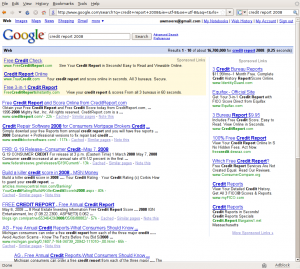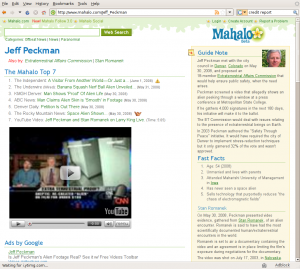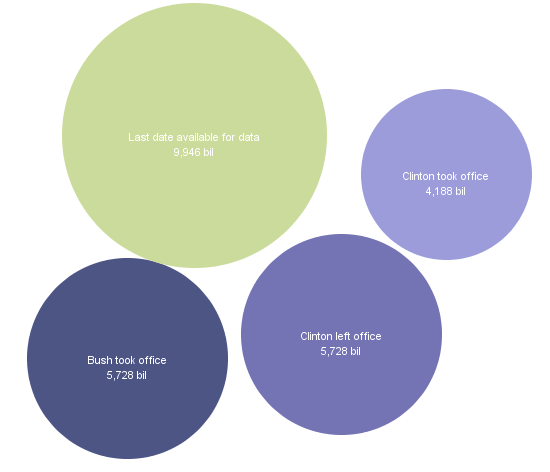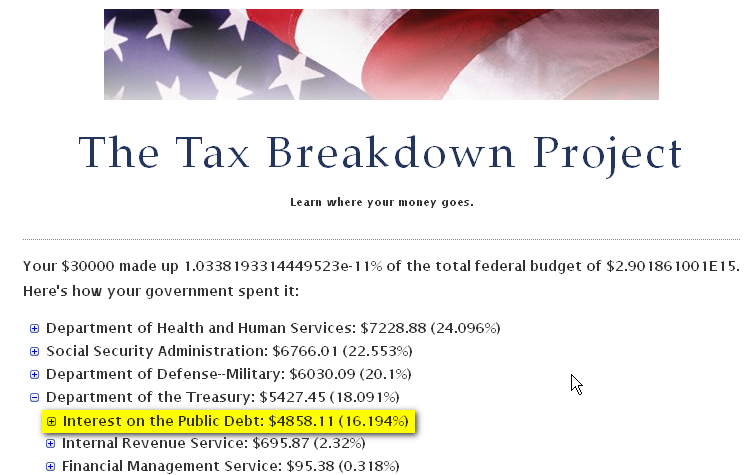CreditReport.com screwed my mom over last week – and Google helped them do it.
If you missed the singing dude in the pirate costume, FreeCreditReport.com (and CreditReport.com) make their money by giving you your credit report for free, then signing you up for expensive credit monitoring programs that nobody wants. Why would anyone fork over their money when credit reports are available for free without the scam credit monitoring programs thanks to the U.S. Government? It’s because people get confused, believe these sites are the official credit report site, don’t read the fine print, and hand over their credit card numbers because they think that’s part of the credit report identification process. These sites can only get money if they maintain the deception that they are the official free credit report site. If one of their visitors finds AnnualCreditReport.com, the jig is up.
How do these nefarious sites manage to trick people in the age of Google? Well, it’s pretty easy. My mom searched for “Credit Report 2008” with Google, and the picture below is what she got.

See any sign of AnnualCreditReport.com – practically the only site anyone searching for anything having to do with credit reports would want? Me neither. If you search for just “credit report” Google’s algorithms nail it, although it’s still hard to see underneath all the sponsored link clutter. The extra “2008” term kills PageRank, letting the search engine optimizers hijack the search results. CreditReport.com, here we come.
This set of results screams out for somebody to build better credit report search results page than Google’s algorithms. For this particular search, it’s not rocket science. 90% of the time, people searching for “credit report almost anything” want either their free annual credit report or a description of what a credit report is. Approximately 0% of the time, they want to sign up for crappy overpriced credit monitoring. Human-powered search seems like it could be the answer.
Unfortunately, we’re not there yet. Here’s what Mahalo (the only human-powered search engine I’ve heard of) displays for a search of “credit report.”

Wow, could that be less useful?
OK, they’re working on it, and they don’t have pages for everything yet. Fine. The problem is that the pages they do have won’t help my mom. The Guide Note is nice, but Wikipedia handles that, and my Mom already uses it. More importantly, where are the search results? Surely there are more than 7. Those 7, though, are all you’re getting from Mahalo.

Mahalo’s got exactly the right idea and exactly the wrong idea at the same time. My mom would love a site that uses humans to generate the top results for common searches like this one and outsources the rest of the results and the results for topics it doesn’t cover yet, behind the scenes, to someone like Google. I would love to install it as her home page. But she’s not going to want to watch Mahalo’s compulsory YouTube video or share the page on Facebook. She’s also not going to know what to do when Mahalo returns a Wiki-stub with a spam link or two as search results for something. Mahalo dedicates most of their page space to non-search stuff (scroll down for Web 2.0 overload) and puts stuff like Facebook, StumbleUpon, and Propeller on every page — and I don’t know a single person who knows what Propeller is.
Why is Mahalo targeting young, first-adopter, super-wired people instead of people like my mom? When we’re searching, all the Web 2.0 goodies in the world won’t intrigue us – we want good results fast. And in terms of good results fast, their editors are never going to be able to put together a page that will be able to beat Google for me. I’ve been searching the Internet for 12 years, and I’m as good or better than anyone they can afford to hire to write guide pages for them. Anyone who’s heard of Propeller is probably even better. The people who need human-powered help aren’t people like me, they’re people like my mom.
If Mahalo could get their name out as the site where you send your parents when they want to get a copy of their credit report without getting hit with $75 of nearly-fraudulent charges, they would get dozens and dozens of older eyeballs.
My mom likes to buy crap, and has a reasonable amount of disposable income. If you show her an ad for a porcelain unicorn (something that has 0% chance of confusing her when she’s searching for her credit report, but something she’s searched for before), she just might buy it. And there are a LOT of people over 45 with disposable income who get confused by Google’s search results.
Most of these people don’t understand that all that small print at creditreport.com means “these guys are going to charge me every month if I take them up on the ‘free credit report’ offer.” And a lot of them might throw in a “2008” at the end of their searches. I don’t think PageRank is going to be able to stay ahead of the search engine optimization people in cases like these.
Mahalo can. They need to be targeting people like my mom.
Right now, Google won’t pay the price for raking in their share of the spoils creditreport.com got from screwing over my mom. My mom is in the demographic of people who blame themselves whenever something goes wrong and a computer is involved. She won’t blame Google (like I do), and nobody else is any better anyway. cRANKy, the search engine targeting people over 50, is way too terrible to recommend.
For now, my mom will fight with CreditReport.com’s customer service, then initiate a chargeback with her credit card company. Next time she needs something like this, she will call me and feel ashamed that she can’t handle something that sounds so simple on her own. And until someone makes a better search for older people, call-your-kids search will be the answer. Just like it was in 1998.









